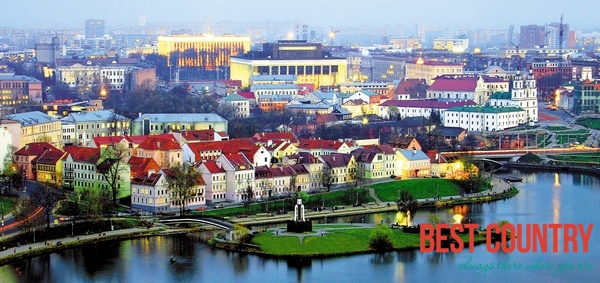First mentioned in the Medieval Chronicles under the year of 1067, Minsk, the capital of Belarus and its geographical heart, has a population of 1.7 million.
Minsk is the capital of Belarus
 The city is situated in a picturesque place on the banks of the Svisloch river which in old days used to be one of the busiest trade routes connecting the Baltic Sea and the Black Sea.
The city is situated in a picturesque place on the banks of the Svisloch river which in old days used to be one of the busiest trade routes connecting the Baltic Sea and the Black Sea.
The climate is moderate continental with an average January temperature of –6°C and an average July temperature of +18°C.
Minsk of today is the city of wide streets, modern and old architectural ensembles, fountains, shady parks and green boulevards well deserving the opinion of being one of the best cities of the former Soviet Union.
Minsk is the city where one can find the best of the Belarusian cultural heritage — museums, exhibitions, theatres, world famous Belarusian ballet, folk dance and choir performances, etc.
Minsk is the city where everyone feels at ease. The city has lucrative geographic position (700 km West of Moscow, 900 km South of St. Petersburg, 500 km East of Warsaw, 650 km North of Kiev).
Minsk is the crossroads of the most popular European tours. It is connected by highways, railroads, and airlines with all the European capitals and with principal cities of Asia, Middle East, and North America as well.
Foreign visitors are attracted to this city by its surprisingly clean, beautiful, calm, optimistic and hospitable atmosphere just to see with their own eyes life, history, culture and traditions of the Belarusian people.